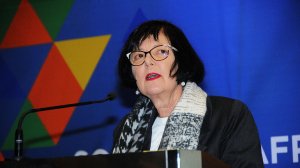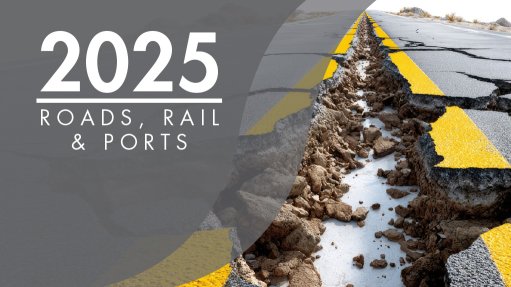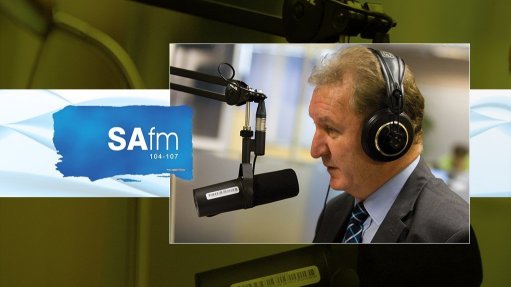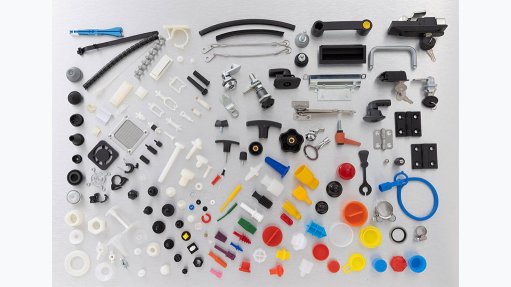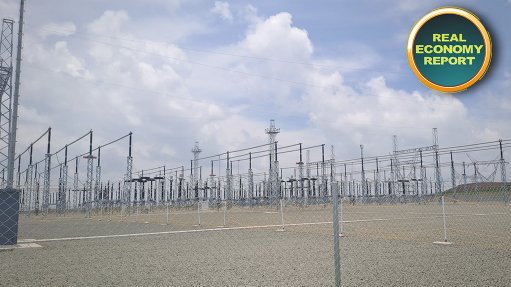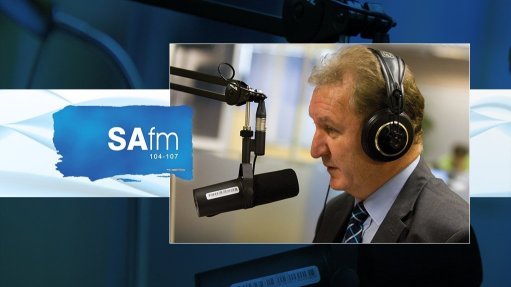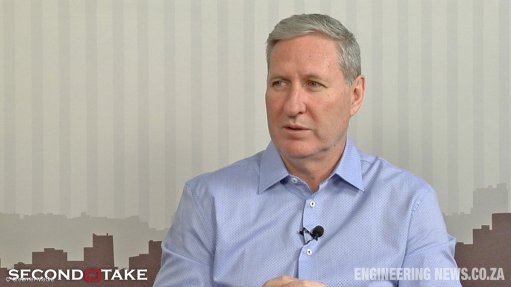Creecy reveals targets, highlights progress on transport sector turnaround

In this video, Transport Minister Barbara Creecy outlines the six targets for the turnaround of the transport sector over the next few years.
Transport Minister Barbara Creecy has outlined six targets that will guide the Department of Transport’s (DoT’s) work over the next few years to transform the passenger, freight, and aviation sectors.
Speaking at the 2025 Southern African Transport Conference, hosted at the Council for Scientific and Industrial Research, in Pretoria, on July 7, she said the first target was to ensure that, by 2029, 250-million tonnes a year of freight were carried on the Transnet network.
The second target focuses on improving port efficiency to achieve the international benchmark of 30 gross crane movements an hour when loading and unloading ships.
“We need to achieve this standard to remain globally competitive,” Creecy explained.
The third target is to guarantee that the passenger rail system can reach 600-million passenger journeys a year by 2030.
The fourth target is to boost the aviation sector’s contribution to tourism, economic development and job creation, with an expectation that 42-million passengers a year will move through the Airport Company of South Africa (ACSA) network of airports by the end of the current political term.
The fifth target seeks to move 1.2-million tonnes of airfreight a year through ACSA airports to position South Africa as a key player in regional and international trade.
The sixth target is to reduce road fatalities by 45% by 2029, in line with the UN goal of halving road deaths by 2030.
RAIL
By the end of May, the Passenger Rail Agency of South Africa (PRASA) had successfully restored 35 out of 40 passenger corridors and branch lines, Creecy revealed.
This comes after PRASA's network suffered widespread vandalism, theft of infrastructure, neglect and operational collapse during the Covid-19 pandemic years and the ensuing lockdown period.
Critical signalling systems were stripped, stations were abandoned or illegally occupied and entire lines became inoperable, resulting in a near-total breakdown of the commuter rail service across the country.
Creecy said that, in the last financial year, PRASA had achieved an unaudited figure of 77-million passenger journeys. In the current financial year, she said the intention was to reach 116-million passenger journeys.
She said PRASA’s turnaround was part of the DoT’s efforts to re-establish rail as the backbone of the country’s transport sector.
“Obviously, the key issue that we have to fix in order to start approaching that 600-million passenger journey target is the signalling system, because that is now the abiding constraint on ensuring that we put more train slots onto the network and utilise the brand-new Gibela-manufactured trains that we already have in our depots,” she said.
Creecy explained that the freight rail reform programme, running parallel to the passenger rail reform efforts, was informed by the White Paper on National Rail Policy of 2022 and complemented by the National Freight Logistics Roadmap.
These documents state that strategic infrastructure, such as rail and ports, will remain in public ownership as assets belonging to the State.
“To this end, we must assure the country that we will do all in our power to rebuild and modernise the capabilities, operational effectiveness and competitiveness of our State-owned freight logistics operator,” she said.
However, Creecy floated the idea that additional private freight operators needed to come into the space.
“We must also enhance the involvement of additional operators as a way of extending the freight logistics capabilities of the country, beyond what the public sector alone is able to accomplish. We need our freight logistics operators to compete with each other, but also complement each other when the need arises, for the benefit of our country and our region,” she said.
Creecy said the limited availability of State resources to fund infrastructure development made private sector investment critical.
She said that, to guide private sector investment in the five priority rail and port corridors, the DoT had recently concluded a request for information (RfI) process.
Transnet will start to issue requests for proposals from the end of August, thereby beginning the formal procurement process for private sector investment in priority rail lines and ports.
Further, she pointed out that the department had concluded a memorandum of agreement with the Development Bank of South Africa (DBSA) and the National Treasury, appointing the DBSA as the hosting institution for the new Private Sector Participation Unit.
At the end of July, the department will release the second batch of RfIs focused on passenger rail initiatives.
She added that government had already established the Interim Rail Economic Regulator to create fairness and transparency for third-party operators, improve network use, increase competition, and reduce costs.
“To sustain our economy, we cannot afford to wait until the private sector participations reach financial close before launching an ambitious programme to rehabilitate Transnet’s rail network and rolling stock, as well as port infrastructure and equipment.
“Funding sources for immediate rehabilitation of the five priority rail corridors include the Transnet budget for rail and rolling stock maintenance and the purchase of port equipment; submissions to the National Treasury’s Budget Facility for Infrastructure; and private investment in refurbishing or expanding line capacity through existing customer agreements,” Creecy explained.
AIR
To meet the target of moving 42-million passengers a year and increasing air freight handling through the ACSA network, the airports operator had been allocated R21-billion for infrastructure development over the next three years, Creecy noted.
The funds will be used to improve facilities for passenger safety and comfort over the medium term and to build a new freight terminal at OR Tambo International Airport, in Gauteng.
“In addition, we are fast-tracking projects to ensure reliable availability of jet fuel to all airlines at our airports, as well as the general upkeep and upgrading of the facilities and technologies at each of our airports,” she said.
This comes after several incidents in recent years where South Africa's major airports, particularly OR Tambo International, faced severe jet fuel shortages owing to logistical disruptions, outdated pipeline infrastructure and delays in shipping.
These shortages caused significant flight delays and diversions, impacting both domestic and international connectivity and raising concerns about the resilience of the country’s aviation supply chain.
Regarding South African Airways (SAA), Creecy said that, in a recent study by Oxford Economics Africa, it was shown that the State-owned airline contributed R9.1-billion to South Africa’s GDP in 2023/24. This figure was projected to triple by the end of the current political term, she said.
Over the same period, Creecy said, the airline’s operations were expected to support 86 000 jobs, up from the current 25 000.
“SAA is pursuing a bold route expansion programme to strengthen its regional and global footprint. New regional routes from Johannesburg and Cape Town aim to boost intra-African connectivity, supporting tourism and trade. The airline has begun a measured fleet expansion to meet growing demand, reinforcing its role as a connector of economies across the continent and beyond,” she said.
With unencumbered assets and renewed profitability, she believed that SAA was well positioned to drive economic value through expanded international services, job creation, and increased contributions to tourism and trade.
ROADS
Creecy noted that the condition of the country’s national roads and the feeder routes that connected with them remained a cause for concern.
“Over the past year, national government, through the South African National Roads Agency Limited (Sanral), has, at the request of our provincial premiers, taken over another 3 000 km of provincial roads.
“Sanral will reprioritise within their existing maintenance and capital funding so that these roads are serviced through the routine road maintenance programme,” she explained.
Creecy acknowledged that much more work needed to be done to ensure all provincial and municipal roads were in good condition. However, she said it was simply not possible for Sanral to take on further upgrades at this time without placing unreasonable strains on its own budget.
“At the meeting of provincial MECs and the South African Local Government Association (Salga), which we had on [July 4], we committed to undertaking a review of road maintenance financing across all spheres of government. While this review is in progress, we must ensure existing budgets given to provincial and municipal governments are effectively spent and not returned to National Treasury,” she said.
Creecy said the DoT was currently strengthening its oversight role in the execution of concurrent functions that were shared with provincial governments through the management of conditional grants.
“Of great importance here is the R94-million we have prioritised over the medium term to provide technical support to provincial road departments to ensure conditional grants are effectively spent on road maintenance.
“We have now signed a memorandum of understanding with Salga so that, together, we can monitor spending of the Municipal Infrastructure Grant and make sure that it is spent on road maintenance. Unfortunately, this budget is not, at the moment, ring-fenced by municipalities, and as a result, it is either used for other purposes or returned to National Treasury unspent,” she revealed.
Accordingly, Creecy said, the first priority must be to ensure existing budgets were well spent.
She added that formalising the taxi industry was another key priority.
“The taxi industry is responsible for transporting over 85% of all commuters. Accordingly, formalising the industry and rooting out criminality and irregular operations remains a key focus. In this regard, and in line with other economic sectors, existing taxi associations have a fundamental and important role to play in self-regulation and governance,” she said.
To make the taxi industry more financially viable, Creecy said government had committed to working with the banks and vehicle manufacturers to de-risk loan financing on new vehicles. Part of this process would involve developing a standard operating procedure to ensure uniformity in issuing operating licences by provincial governments.
“It is of crucial importance that the duration of vehicle licences aligns with the loan repayment period for new vehicles,” she said.
She said the DoT would work with all provincial departments to identify areas of good practice in the issuance of licences, so that they could be shared and adopted by all.
In terms of road accidents, Creecy said the average 9% yearly decline in accidents and fatalities was holding.
“To reduce deaths further, we must work together in a focused and consistent manner to tackle the high pedestrian fatality rate with consistent community outreach and education among those who live adjacent to and cross major roads,” she said, noting that 44% of road deaths in the country were pedestrians.
Article Enquiry
Email Article
Save Article
Feedback
To advertise email advertising@creamermedia.co.za or click here
Comments
Press Office
Announcements
What's On
Subscribe to improve your user experience...
Option 1 (equivalent of R125 a month):
Receive a weekly copy of Creamer Media's Engineering News & Mining Weekly magazine
(print copy for those in South Africa and e-magazine for those outside of South Africa)
Receive daily email newsletters
Access to full search results
Access archive of magazine back copies
Access to Projects in Progress
Access to ONE Research Report of your choice in PDF format
Option 2 (equivalent of R375 a month):
All benefits from Option 1
PLUS
Access to Creamer Media's Research Channel Africa for ALL Research Reports, in PDF format, on various industrial and mining sectors
including Electricity; Water; Energy Transition; Hydrogen; Roads, Rail and Ports; Coal; Gold; Platinum; Battery Metals; etc.
Already a subscriber?
Forgotten your password?
Receive weekly copy of Creamer Media's Engineering News & Mining Weekly magazine (print copy for those in South Africa and e-magazine for those outside of South Africa)
➕
Recieve daily email newsletters
➕
Access to full search results
➕
Access archive of magazine back copies
➕
Access to Projects in Progress
➕
Access to ONE Research Report of your choice in PDF format
RESEARCH CHANNEL AFRICA
R4500 (equivalent of R375 a month)
SUBSCRIBEAll benefits from Option 1
➕
Access to Creamer Media's Research Channel Africa for ALL Research Reports on various industrial and mining sectors, in PDF format, including on:
Electricity
➕
Water
➕
Energy Transition
➕
Hydrogen
➕
Roads, Rail and Ports
➕
Coal
➕
Gold
➕
Platinum
➕
Battery Metals
➕
etc.
Receive all benefits from Option 1 or Option 2 delivered to numerous people at your company
➕
Multiple User names and Passwords for simultaneous log-ins
➕
Intranet integration access to all in your organisation


